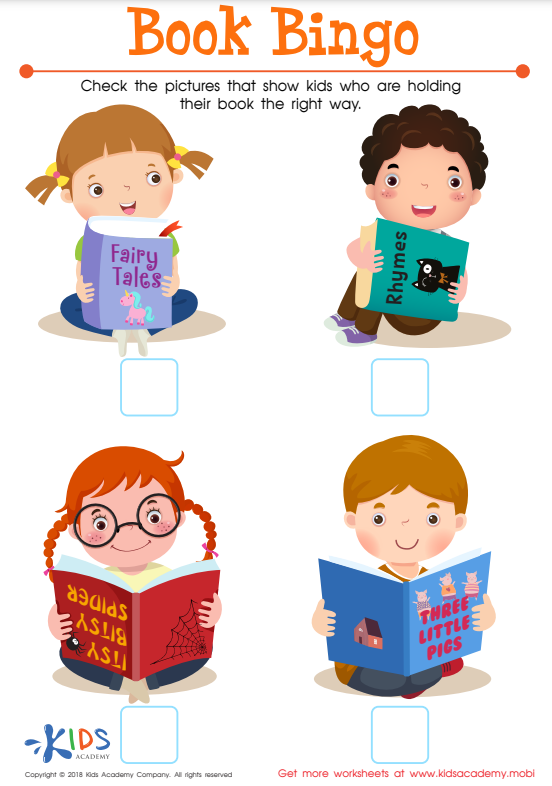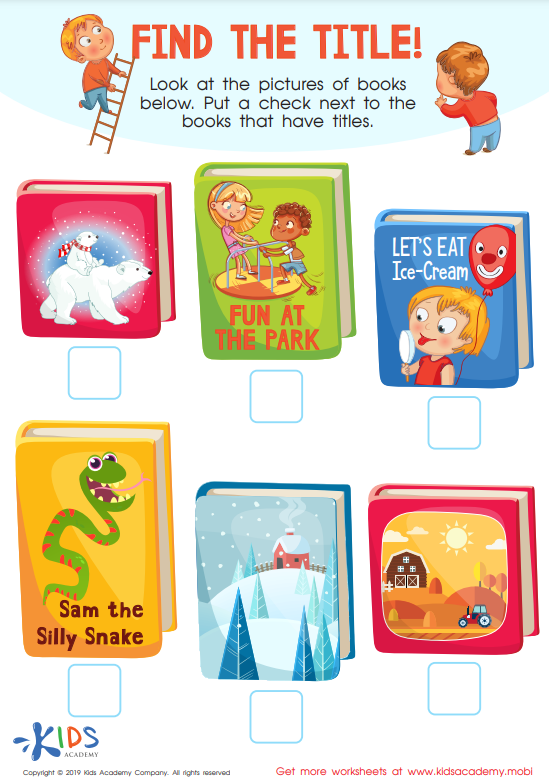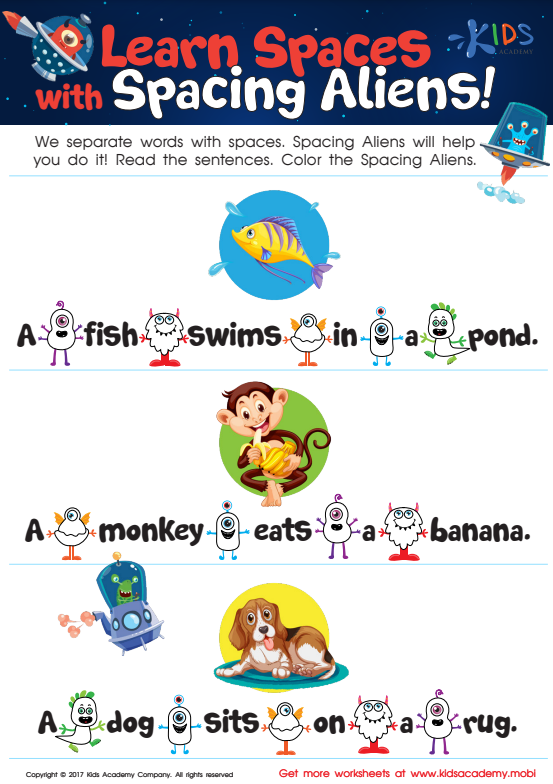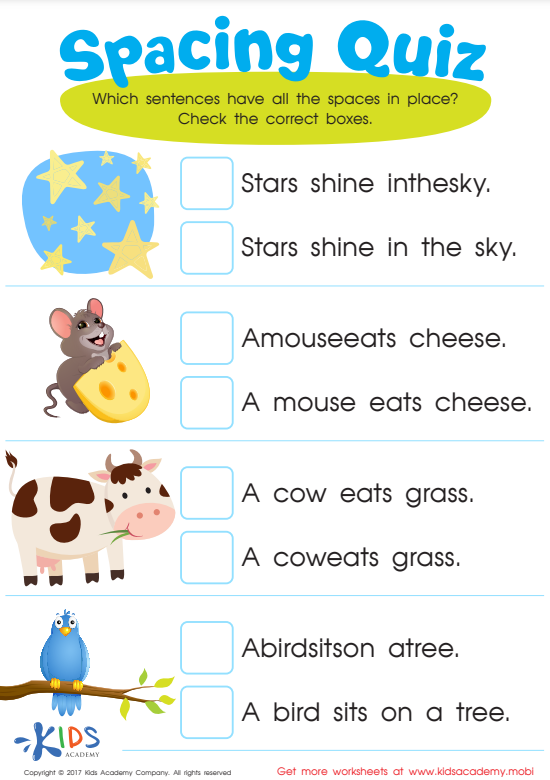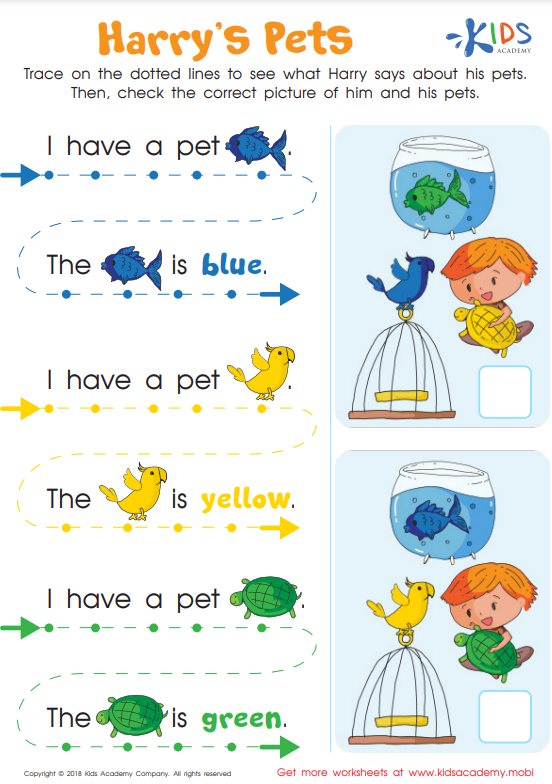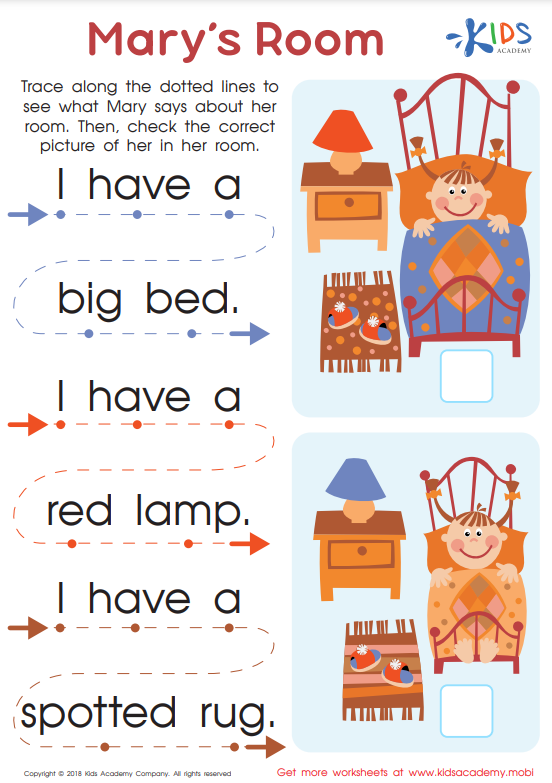-
English
-
English Pre-K
-
Unit 1: Early Literacy Skills
-
ABCs
- Pre-writing Activities
- Letter A
- Letter B
- Letter C
- Letter D
- Letter E
- Letter F
- Letter G
- Letter H
- Letter I
- Letter J
- Letter K
- Letter L
- Letter M
- Letter N
- Letter O
- Letter P
- Letter Q
- Letter R
- Letter S
- Letter T
- Letter U
- Letter V
- Letter W
- Letter X
- Letter Y
- Letter Z
-
Phonological Awareness
- Rhyming Words
- Letter Sounds B, C, D, and F
- Letter Sounds G, H, J, and K
- Letter Sounds L, M, N, and P
- Letter Sounds Q, R, S, and T
- Letter Sounds V, W, X, Y, and Z
- Letter Sounds A, E, and I
- Letter Sounds O and U
- Beginning Sounds
- Matching Letters to Sounds
-
ABCs
-
Unit 2: Vocabulary
-
Common Words
- Sorting Words into Categories
- Color Words
- Verbs and Adjectives
-
Sight Words
- Sight Words 'I' and 'Can'
- Sight Words 'You' and 'Like'
-
Common Words
-
Unit 3: Print Awareness
-
Parts of a Book
- Working with a Book
- Spaces Between Words
- Text and Illustrations
-
Picture Books and Poems
- Picture Book Text Features
- Poem Text Features
- Signs and Labels in the Community
-
Parts of a Book
-
Unit 4: Reading Literature
- Questions About Stories
- Discussing Stories
-
Unit 5: Reading Informational Texts
- Retelling Details in a Text
- Questions About a Text
- Connections Between Events
- Text Features
- Describing Illustrations
-
Unit 1: Early Literacy Skills
-
English Pre-K
-
Math
-
Math for Pre-Kindergarten
-
Logic and Geometry
-
Matching and Sorting
- Same and Different
- Which One Is a Little Different?
- Objects That Go Together
- Sorting by Color and Size
- Sorting The Same Group in Different Ways
- Patterns
-
Shapes
- Shapes in Our Environment
- Naming Shapes Regardless of Size
- Making Shapes in Preschool
- Comparing Shapes
- Relative Positions
- Sorting Shapes
-
Matching and Sorting
-
Early Number Sense
-
Numbers 1–5
- Counting to 3
- Counting to 5
- Arranging Objects up to 3 Objects
- Arranging up to 5 Objects
- Writing Numbers 1–5
-
Numbers 1–5
-
Numbers up to 10
- Counting to 10
- Arranging up to 10 Objects
- Number 0
- Writing Numbers 6–10
- Breaking Down Numbers 6-10
-
Logic and Geometry
-
Math for Pre-Kindergarten
Parts of a Book
The World of Print
Your animal lover would enjoy a trip down the Amazon River. Wouldn’t your little comedian love a book of knock-knock jokes? I’m sure your rising basketball star would appreciate reading the latest stats. There are no bounds for your child when it comes to the exotic worlds she can explore in books. Use picture books, recipes, online articles, and magazines to teach the concepts of print.
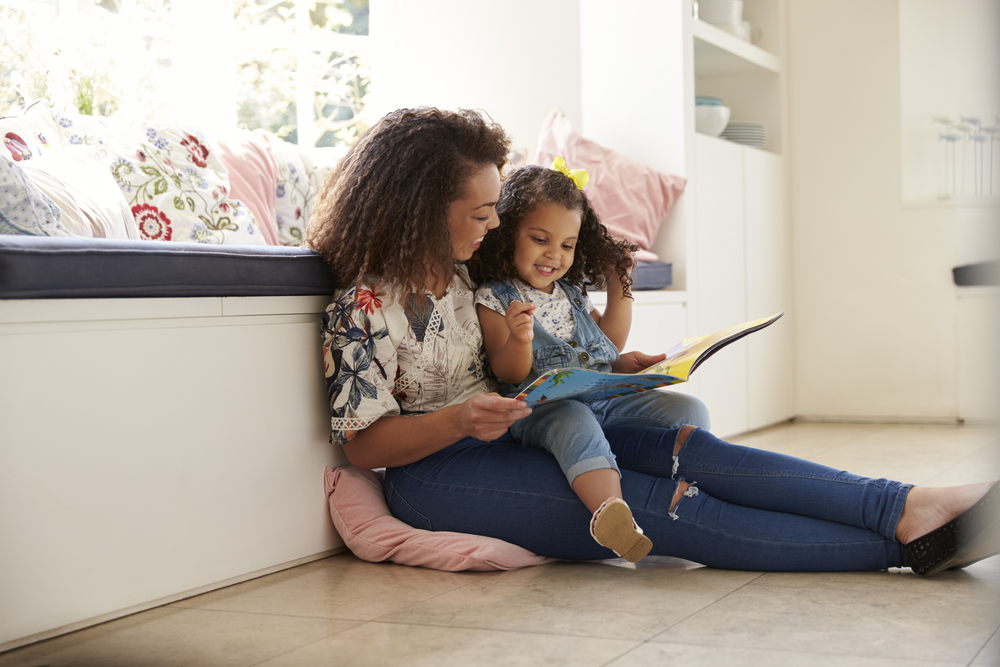
Create a print rich environment for your child to immerse them with written language. Label clothing and toy bins with words and photographs. Fill bookshelves with books of many genres. Your child should begin connecting words to meaning. Spend quality time reading books aloud and going over the parts of books.
Important Milestones to Learn
Teach the Parts of a Book
Books are treasures and your child should learn to treat them gently. Teach them to identify the front and back cover of the book and the spine. Read the title and point out the author’s and illustrator’s names each time you begin reading a new book. Practice turning pages with care. Your child will learn that books open towards the left and the print should be facing the right way.
Have fun practicing these words by writing them on sticky notes. Encourage your child to label the parts of a book. They can also make a book and label it’s parts. Consistency is important here. When you read books to your child engage in self-talk about what you’re doing, where your finger is pointing, and how you’re holding the book.
Teach the Structure of a Page
Phonemic awareness is one of the first building blocks to literacy. Your child has been learning that letters have sounds that are strung together to form words. Words are separated by spaces to form sentences and then paragraphs. Have your child finger-point each word and take note of capitalization and punctuation at the end of sentences.
Use word cards to have your child build words and sentences. Consider using some type of marker to show the spacing between words.
For example:
The car is red.
The flower is red.
The apple is red.
Teach Which Direction to Read
The English language is read from top to bottom left to write. It takes time to master the sweep at the end of a line back to the left. Books designed for younger children often have less than four lines on the page as to not overwhelm young readers with too much text. These activities from Kids Academy are ideal to practice directionality.
Read the other articles in the Parts of a Book section to learn about with different aspects of this area of skills in more detail.
